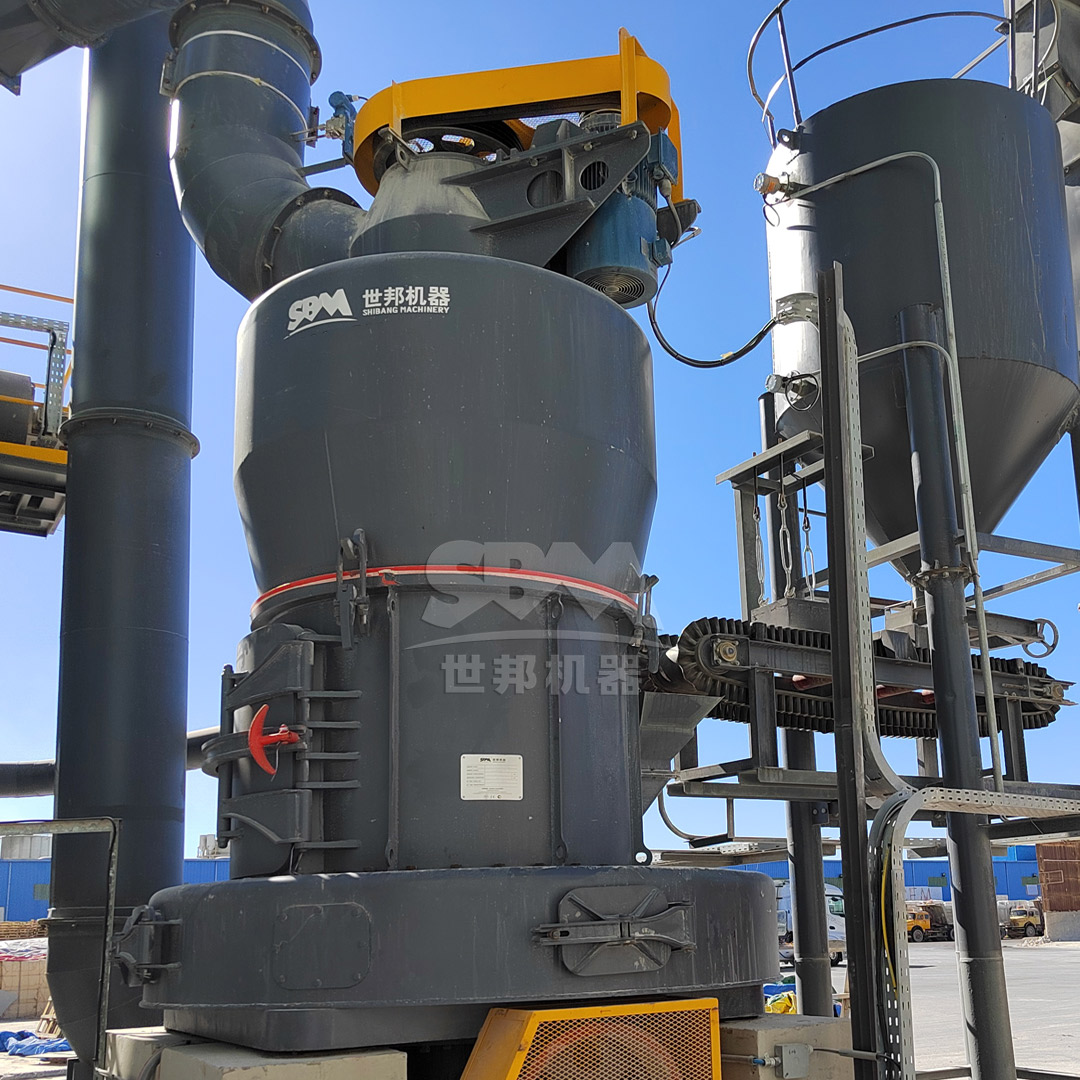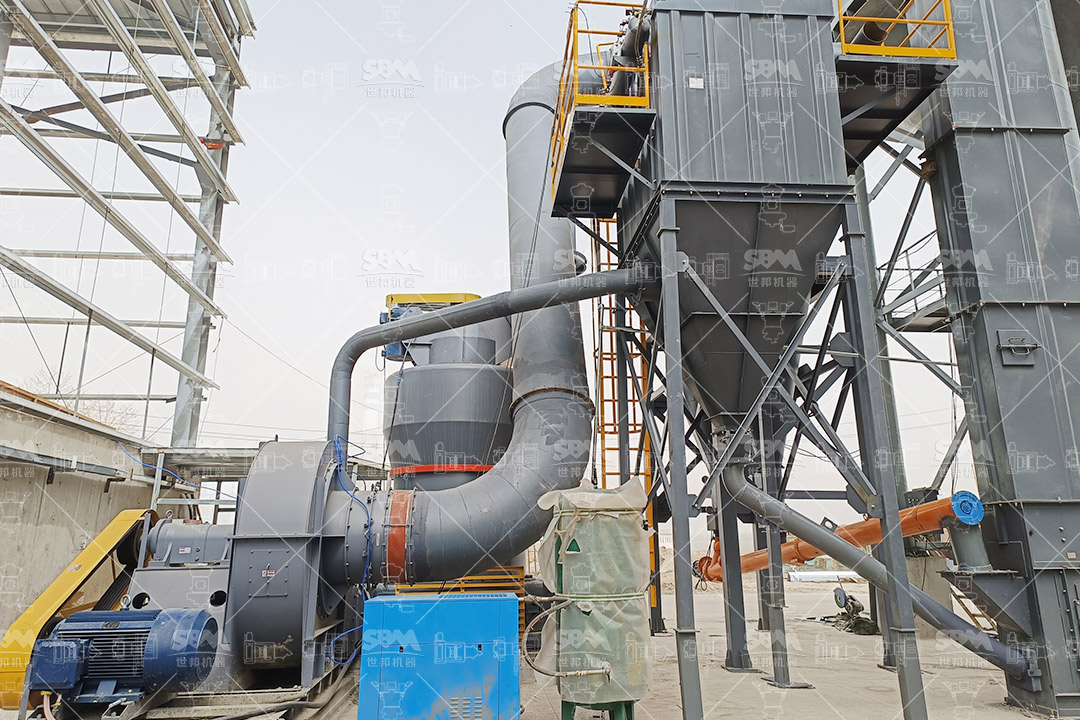Cement clinker, the semi-finished product in cement manufacturing, is one of the most challenging materials to grind due to its extreme hardness and abrasive nature. The grinding process is critical for achieving the desired fineness and reactivity required for high-quality cement production. Pulverizers designed for such applications must combine robust construction with advanced grinding technology to efficiently reduce clinker particles to the required micron sizes while maintaining operational efficiency and minimizing wear.
The grinding of hard materials like cement clinker involves several mechanical principles working in concert. Understanding these mechanisms is essential for selecting the appropriate equipment and optimizing the grinding process.
Compression grinding utilizes direct pressure between two hard surfaces to fracture particles. This method is particularly effective for brittle materials like cement clinker, where the application of sufficient force causes the material to crack along natural fault lines. The efficiency of compression grinding depends on the pressure applied, the contact area, and the material’s compressive strength.
Impact grinding involves the collision of particles with moving components or other particles at high velocity. The sudden transfer of kinetic energy creates stress concentrations that exceed the material’s fracture strength, resulting in particle breakage. This mechanism is effective for both coarse and intermediate grinding stages.
Attrition grinding occurs when particles rub against each other or against grinding surfaces under pressure. This shearing action gradually wears away material, producing fine particles. While slower than compression or impact methods, attrition is highly effective for achieving ultra-fine finishes.
Abrasion involves the scraping action of hard surfaces across the material, effectively shaving off small particles. This mechanism is particularly relevant in the final stages of clinker grinding where surface smoothness and particle shape are important.
| Grinding Mechanism | Primary Action | Best Application | Energy Efficiency |
|---|---|---|---|
| Compression | Pressure fracture | Coarse to medium grinding | High |
| Impact | High-velocity collision | Initial size reduction | Medium |
| Attrition | Particle rubbing | Fine to ultra-fine grinding | Low to medium |
| Abrasion | Surface scraping | Final finishing | Low |
Cement clinker presents unique challenges that require specialized grinding solutions. Its mineral composition, primarily consisting of alite, belite, aluminate, and ferrite phases, creates a material with variable hardness and fracture characteristics.
The hard silicate and aluminate minerals in clinker cause rapid wear of grinding components. This abrasiveness necessitates the use of specialized wear-resistant materials in critical components to maintain grinding efficiency and reduce maintenance frequency.
The energy input during grinding predominantly converts to heat, which can negatively affect cement quality by causing dehydration of gypsum and other additives. Effective cooling systems are essential to maintain product specifications.
Grinding operations account for approximately 30-40% of total electrical energy consumption in cement plants. Optimizing energy efficiency while maintaining product quality represents a significant technical challenge.
Cement performance depends heavily on precise particle size distribution. Achieving the optimal balance between fine particles for early strength and coarser particles for later strength requires sophisticated classification systems.

Modern pulverizers incorporate multiple technological innovations to address the specific challenges of cement clinker grinding. These systems combine mechanical efficiency with intelligent control to optimize the entire grinding process.
Vertical roller mills have become the industry standard for cement clinker grinding due to their superior energy efficiency and drying capabilities. In VRM systems, the material is fed centrally onto the grinding table and distributed uniformly by centrifugal force. Hydraulically loaded grinding rollers then compress the material bed, achieving efficient size reduction with minimal energy consumption.
The LM Series Vertical Roller Mill represents the pinnacle of this technology, offering exceptional performance for cement clinker applications. With input sizes up to 50mm and output fineness ranging from 30-325 mesh (special models achieving 600 mesh), these mills deliver throughput capacities from 3-250 tons per hour. The integrated design reduces footprint by 50% compared to traditional systems, while advanced wear protection extends component life up to three times longer than conventional mills.
HPGR technology applies extremely high pressure to material beds, causing particle-to-particle comminution. This interparticle crushing is highly efficient for cement clinker, as it creates microcracks within particles that facilitate downstream grinding. The resulting material exhibits improved grindability in subsequent processing stages.
While being gradually replaced by more efficient technologies in new installations, ball mills remain widely used in the cement industry. These rotating cylinders containing grinding media (typically steel balls) utilize a combination of impact and attrition mechanisms. Modern ball mills incorporate advanced diaphragm designs, efficient drives, and sophisticated control systems to optimize performance.
Roller presses employ two counter-rotating rolls that apply high pressure to material fed between them. The compacted material exits as flake-like agglomerates that are easily disagglomerated in downstream processes. When used as a pre-grinding stage before ball mills, roller presses can increase overall system capacity by 30-50% while reducing specific energy consumption.

For applications requiring exceptionally fine cement products or specialty cements, advanced grinding systems capable of achieving micron and sub-micron particle sizes are essential.
The SCM Series Ultrafine Mill provides an optimal solution for these demanding applications. Capable of producing powders with fineness ranging from 325 to 2500 mesh (D97 ≤ 5μm), this mill combines high efficiency with precise particle size control. Its unique design features a vertical turbine classifier that ensures accurate particle size cuts without coarse powder contamination. With throughput capacities from 0.5 to 25 tons per hour (depending on model), the SCM series delivers energy savings of 30% compared to conventional jet mills while doubling production capacity.
Key advantages for cement applications include the special material composition of grinding rollers and rings, which significantly extends service life when processing abrasive clinker. The intelligent control system automatically maintains target fineness by adjusting operational parameters in real-time, ensuring consistent product quality despite variations in feed material characteristics.
| Technology | Energy Consumption (kWh/t) | Typical Product Fineness | Wear Rate | Capital Cost |
|---|---|---|---|---|
| Ball Mill | 30-40 | 300-400 m²/kg | High | Medium |
| Vertical Roller Mill | 25-35 | 350-450 m²/kg | Medium | High |
| Roller Press + Ball Mill | 22-30 | 350-500 m²/kg | Medium-High | High |
| SCM Ultrafine Mill | 18-28 | 500-700 m²/kg | Low-Medium | Medium-High |
Modern cement grinding rarely relies on a single machine but rather on integrated systems that combine multiple technologies to optimize overall performance. These systems typically include pre-crushing, grinding, classification, and material handling components working in harmony.
Efficient classification is crucial for cement grinding circuits. Static, dynamic, and combination separators ensure that only properly sized particles leave the system while oversize material returns for further grinding. Advanced classifiers with adjustable rotor speeds and vane configurations provide precise control over product fineness and particle size distribution.
Many modern grinding systems incorporate drying functions, allowing them to process materials with moisture contents up to 15-20%. Hot gas generators or waste heat from other process stages provide the necessary thermal energy, making these systems particularly valuable in regions with high humidity or when using wet additives.
Advanced control strategies using PLC and DCS systems continuously monitor and adjust grinding parameters. These systems optimize production rate, product quality, and energy consumption by responding to changes in feed material characteristics and operating conditions. Modern control platforms also facilitate remote monitoring and predictive maintenance, reducing downtime and operational costs.
Efficient material transport between grinding stages and to storage silos is essential for system performance. Pneumatic conveying, mechanical elevators, and screw conveyors must be properly sized and configured to prevent bottlenecks and maintain system stability.

The evolution of clinker grinding technology continues to focus on energy reduction, quality improvement, and environmental compliance. Several emerging trends are shaping the future of this critical process.
Combinations of different grinding technologies in single circuits are becoming increasingly common. These hybrid systems leverage the specific advantages of each technology at different stages of the size reduction process, optimizing overall efficiency and product quality.
New materials and surface treatment technologies are extending the service life of grinding components. High-chromium alloys, ceramic composites, and specialized hardfacing techniques are being developed specifically for the extreme conditions encountered in cement clinker grinding.
The integration of sensors, data analytics, and machine learning algorithms enables predictive maintenance, real-time optimization, and autonomous operation. These digital technologies are transforming traditional grinding operations into intelligent, self-optimizing systems.
Grinding system manufacturers are increasingly focusing on reducing the carbon footprint of their equipment through improved energy efficiency, the use of alternative fuels, and designs that facilitate the grinding of blended cements with higher proportions of supplementary cementitious materials.
The grinding of hard materials like cement clinker has evolved from a simple crushing operation to a sophisticated process integrating multiple technologies and control strategies. Modern pulverizers must balance grinding efficiency, product quality, energy consumption, and operational reliability while withstanding extremely abrasive conditions. Technologies such as the LM Series Vertical Roller Mill and SCM Series Ultrafine Mill represent the current state of the art, offering cement producers the performance and flexibility needed to meet evolving market demands. As the industry continues to prioritize sustainability and digitalization, grinding technology will undoubtedly advance further, delivering even greater efficiency and environmental performance in the years ahead.